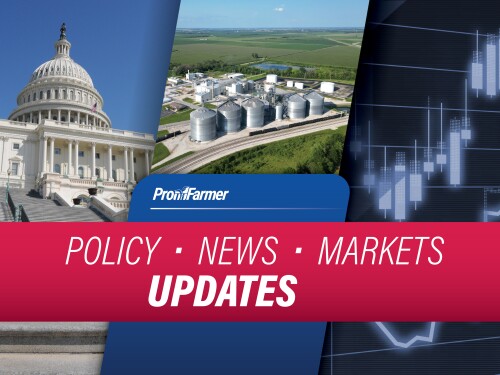Policy Update
Trump administration officials are standing firm after a tense Supreme Court oral argument this week cast doubt on the legality of the president’s sweeping tariff authority.
U.S. Treasury Secretary Scott Bessent announced that the U.S. and China have reached agreement on the “substantial framework” of a trade deal that includes major agricultural purchases by China, but did not provide detailed numbers.
Trump announced yesterday that the United States is ending trade negotiations with Canada after the province of Ontario aired an advertisement featuring Ronald Reagan’s voice and remarks critical of tariffs.
Yesterday, President Donald Trump publicly told U.S. cattle producers that they’ve been doing well thanks to tariffs on imported beef and that now the administration is floating increasing imports of beef from Argentina as a tool to bring down domestic beef costs.
The USDA is preparing to unlock more than $3 billion in assistance for American farmers that had been held up due to the shutdown. These funds — drawn from the Commodity Credit Corporation — were originally earmarked to help producers affected by plunging crop prices, soaring input costs and export disruptions tied to trade policies.
Amid ongoing trade tensions, China imported zero soybeans from the United States last month, marking the first time since November 2018 that no U.S. shipments arrived.
A vote by the International Maritime Organization (IMO) to approve new carbon‐emission standards for oceangoing ships has been pushed back by one year — a move that aligns with President Trump’s strong opposition to binding global shipping climate rules.
In a rare public admission, the department warned that aggressive immigration enforcement — including drastic reductions in the flow of undocumented migrant workers — is already squeezing the farm labor pool and putting pressure on food supply and prices.
A coalition of family farmers and meat companies launched the American Meat Producers Association (AMPA) to defend state animal welfare laws, complicating efforts to include federal preemption in an upcoming farm bill.
With no end in sight, the government shutdown is putting more strain on farmers already squeezed by high input costs and volatile markets.
On Friday, President Trump unveiled plans to levy 100% tariffs on all Chinese imports beginning November 1 and tighten export controls on advanced software.



